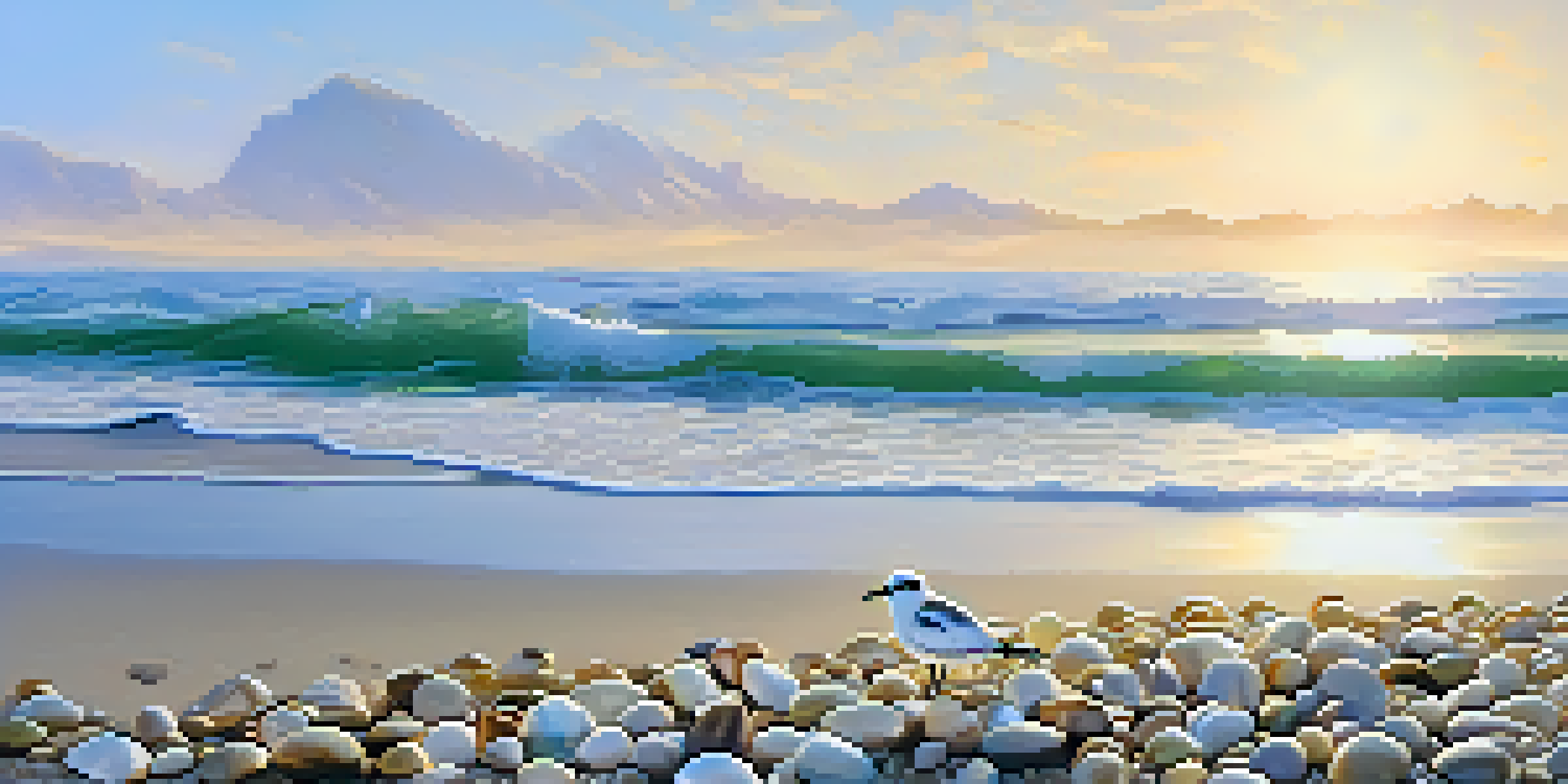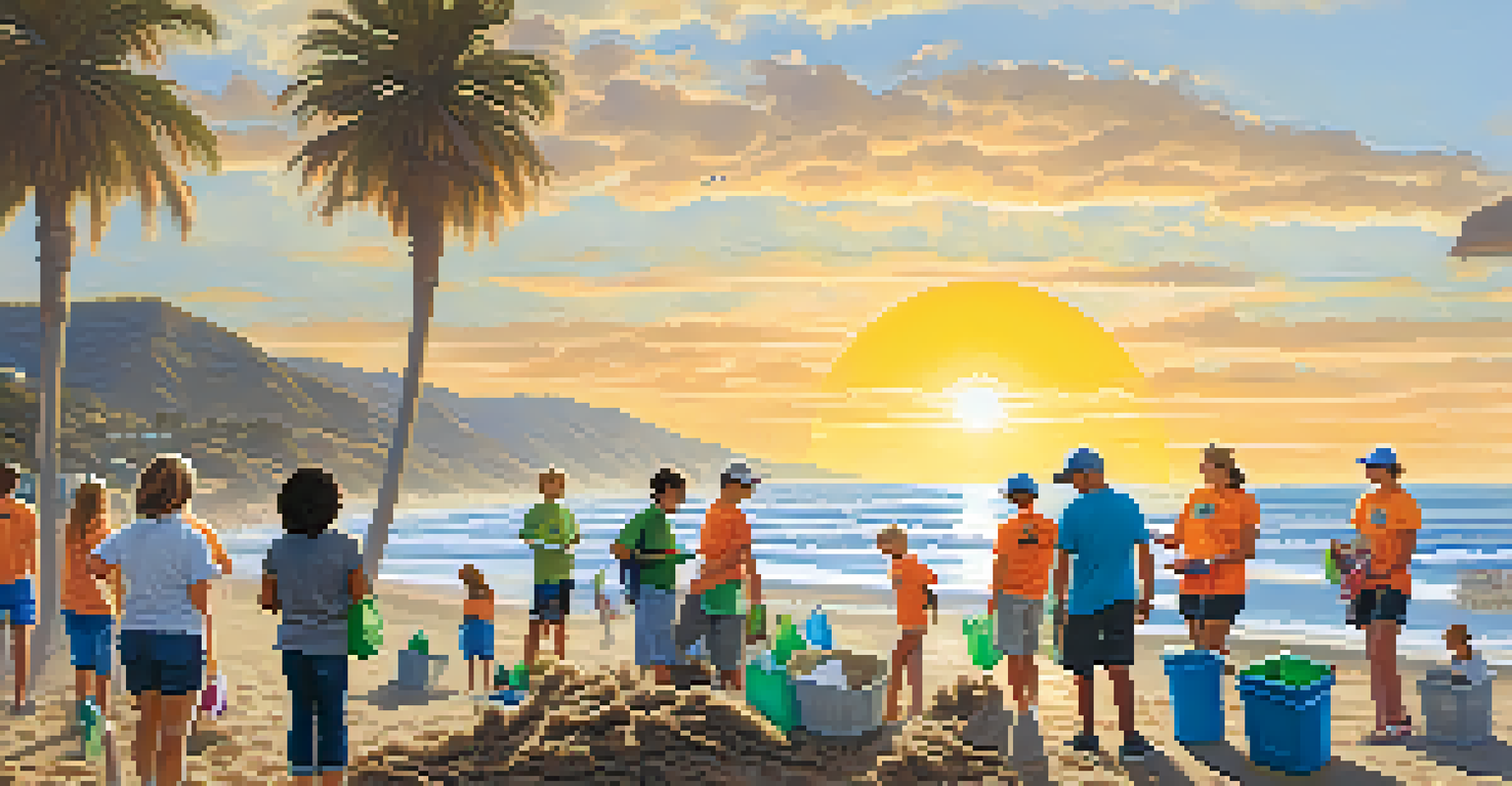Endangered Species in Malibu: Conservation Programs Overview

Understanding Endangered Species in Malibu
Malibu, with its stunning coastline and diverse ecosystems, is home to several endangered species. These species face threats from habitat loss, pollution, and climate change, making awareness and action crucial. Understanding the specific needs and challenges of these animals helps drive effective conservation efforts.
In every walk with nature one receives far more than he seeks.
One prominent endangered species in Malibu is the California Grunion, a small fish that spawns on sandy beaches. The unique spawning behavior of the Grunion relies heavily on the natural tides, making it particularly vulnerable to environmental changes. Additionally, the Western Snowy Plover, a shorebird, also calls Malibu's beaches home, facing similar threats to its habitat.
Recognizing the plight of these species is the first step toward conservation. Local organizations and community members are stepping up to protect these animals, ensuring that future generations can experience the beauty of Malibu's wildlife.
Key Conservation Programs in Malibu
Various conservation programs in Malibu aim to protect endangered species through habitat restoration and community engagement. Organizations like the Santa Monica Mountains National Recreation Area offer educational programs and volunteer opportunities for residents to get involved in conservation efforts. These initiatives not only benefit wildlife but also foster a sense of community responsibility.

Another critical program focuses on beach clean-up efforts to combat pollution affecting marine life. By organizing regular clean-ups, volunteers help maintain a safe environment for species like the California Grunion and the Snowy Plover. Such actions also raise awareness about the impact of litter and pollution on local ecosystems.
Malibu's Endangered Species Threats
Endangered species in Malibu face significant threats from habitat loss, pollution, and climate change, highlighting the need for urgent conservation efforts.
These conservation programs play a vital role in maintaining Malibu's biodiversity. Through collaboration between local governments, non-profits, and community members, these initiatives create a more sustainable environment for both wildlife and residents.
Community Involvement in Conservation Efforts
Community involvement is essential for the success of conservation programs in Malibu. Local residents often participate in workshops and events that educate them on the importance of protecting endangered species. This engagement fosters a culture of stewardship, encouraging individuals to take personal responsibility for their local environment.
The future will depend on the choices we make today.
One way the community gets involved is through citizen science projects, where residents help track and monitor endangered species. These projects not only contribute valuable data to conservation efforts but also deepen the connection between people and nature. When community members see the direct impact of their efforts, it inspires continued involvement.
Moreover, local schools often incorporate environmental education into their curriculum, teaching young people about the significance of biodiversity. This early exposure can cultivate a lifelong passion for conservation and environmental protection, ensuring that future generations remain committed to preserving Malibu's natural treasures.
The Role of Local Government in Conservation
The local government plays a crucial role in safeguarding endangered species in Malibu through policy-making and funding. By allocating resources to conservation programs, they help ensure that these initiatives can thrive. Additionally, local policies can regulate land use and development to protect critical habitats.
In Malibu, the city has implemented zoning regulations that prioritize the preservation of natural habitats. These measures help mitigate the impacts of urban development on wildlife populations. Furthermore, by partnering with environmental organizations, local governments can leverage expertise and resources to enhance conservation efforts.
Community Engages in Conservation
Local residents actively participate in conservation programs, fostering a culture of stewardship and personal responsibility for protecting endangered species.
Engagement with the community is also vital for government initiatives. By hosting public meetings and workshops, local officials can gather input and build support for conservation policies, creating a more unified approach to protecting Malibu's endangered species.
Challenges Facing Endangered Species in Malibu
Despite ongoing conservation efforts, endangered species in Malibu still face significant challenges. Urban development continues to encroach on their natural habitats, leading to fragmentation and loss of critical resources. This makes it increasingly difficult for species like the Western Snowy Plover to find suitable nesting sites.
Climate change poses another substantial threat, affecting everything from sea levels to temperature patterns. For example, increased storm intensity can lead to beach erosion, impacting species that rely on sandy shores for reproduction. Moreover, changes in ocean temperatures can disrupt marine ecosystems, affecting the food sources for many species.
Addressing these challenges requires a multi-faceted approach, combining habitat protection, community engagement, and climate resilience strategies. Only through collaborative efforts can we hope to mitigate these threats and ensure a future for Malibu's endangered wildlife.
Success Stories in Malibu Conservation
Despite the challenges, there are many success stories in Malibu's conservation efforts. The California Grunion, once on the brink, has seen population increases thanks to dedicated beach management and community education programs. These initiatives have helped raise awareness about the fish's unique spawning habits, leading to greater protection during critical times.
Similarly, the Western Snowy Plover has benefited from habitat restoration projects. Through the establishment of designated nesting areas and ongoing monitoring, these shorebirds have begun to thrive once more along Malibu's beaches. Community volunteers have played a vital role in these efforts, demonstrating how collective action can yield positive outcomes.
Successes in Local Conservation
Despite challenges, successful conservation efforts, such as population increases of the California Grunion and Western Snowy Plover, showcase the positive impact of community involvement.
These success stories serve as inspiration for ongoing conservation work. They remind us that with commitment and collaboration, we can make a difference for endangered species in Malibu and beyond.
Future Directions for Conservation in Malibu
Looking ahead, the future of conservation in Malibu hinges on continued collaboration among stakeholders. By fostering partnerships between local governments, non-profits, and the community, we can create a comprehensive approach to protect endangered species. These collaborations can also open doors for funding opportunities, enhancing the reach of conservation programs.
Incorporating technology into conservation efforts can further bolster these initiatives. For example, using drones for habitat monitoring or mobile apps for citizen science data collection can streamline efforts and improve accuracy. By embracing innovation, we can adapt to the evolving challenges faced by wildlife.

Ultimately, the goal is to create a sustainable future for Malibu's endangered species. Through education, community engagement, and adaptive strategies, we can ensure that these remarkable creatures continue to thrive in their natural habitats.